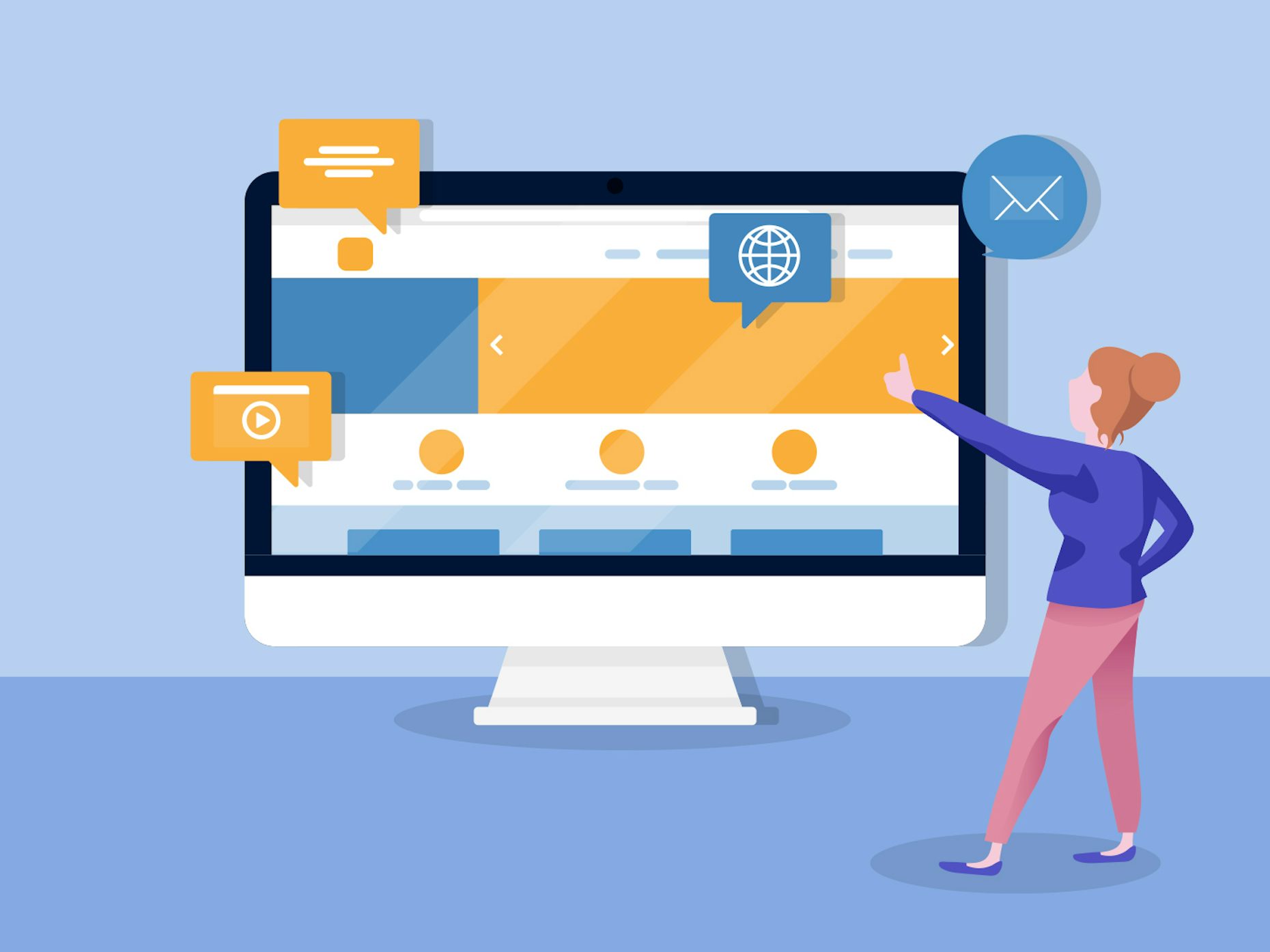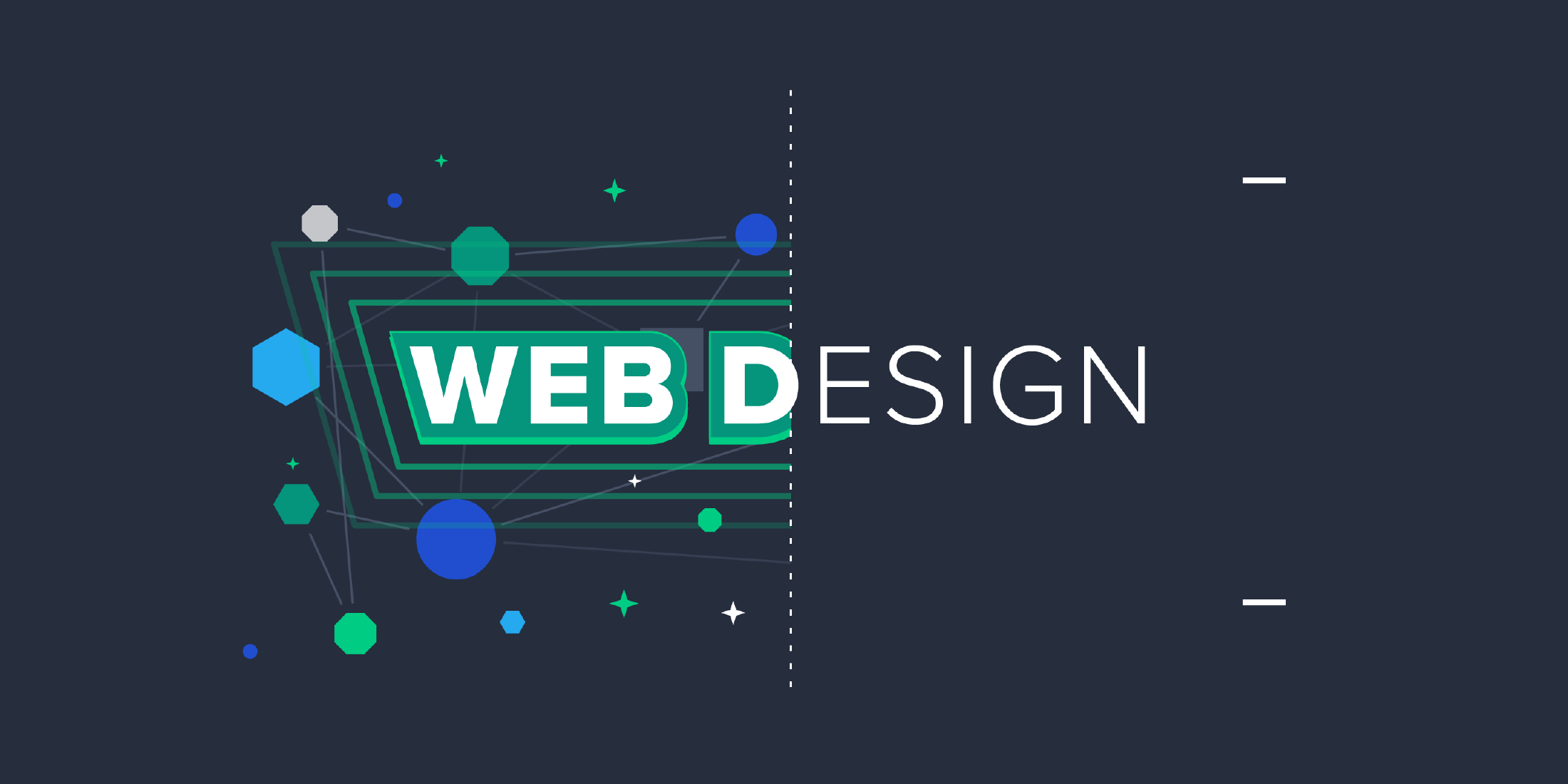All Categories
Featured
Table of Contents
- – Why Is Web Design Important? - 6 Reasons To In...
- – Top Web Design Courses Online - Updated [Apri...
- – Web Page Design: A Comprehensive Guide - Adob...
- – Powderkeg: Web Design Madison, Wi Tips and Tr...
- – Otc Web Design Girdwood, Alaska - Web Design ...
- – Learn Responsive Design - Web.dev Tips and Tr...
- – Web Design - The First 100 Years - Idle Word...
- – Web Design Ledger: Homepage Tips and Tricks:
- – Website Design - Best Ecommerce Web Design B...
- – Web Design Blog - Webdesigner Depot Webdesig...
- – What Is Web Design (And How Do I Get It Righ...
Why Is Web Design Important? - 6 Reasons To Invest In Site ... Tips and Tricks:
Quick summary Functionality and the utility, not the visual style, identify the success or failure of a website. Considering that the visitor of the page is the only individual who clicks the mouse and therefore decides whatever, user-centric style has actually established as a standard method for successful and profit-oriented website design - web design frederick md.
and the energy, not the visual style, determine the success or failure of a website. Since the visitor of the page is the only individual who clicks the mouse and for that reason decides everything, user-centric style has actually ended up being a standard method for successful and profit-oriented website design. After all, if users can't utilize a function, it may also not exist.
g. where the search box need to be put) as it has already been carried out in a variety of articles; rather we concentrate on the techniques which, utilized appropriately, can lead to more sophisticated style decisions and streamline the process of perceiving provided info. Please observe that you might be thinking about the usability-related articles we have actually released before: Principles Of Excellent Website Style And Efficient Website Design Guidelines, In order to use the concepts appropriately we initially need to understand how users engage with websites, how they think and what are the fundamental patterns of users' habits.
Top Web Design Courses Online - Updated [April 2022] - Udemy Tips and Tricks:
Visitors glimpse at each brand-new page, scan a few of the text, and click on the very first link that captures their interest or vaguely looks like the important things they're searching for. There are big parts of the page they don't even look at. A lot of users search for something interesting (or beneficial) and clickable; as quickly as some promising prospects are discovered, users click.
If a page supplies users with premium content, they want to compromise the content with ads and the design of the website. This is the reason not-that-well-designed sites with premium content gain a great deal of traffic over years. Content is more vital than the design which supports it.
Very simple principle: If a website isn't able to fulfill users' expectations, then designer stopped working to get his job done correctly and the business loses cash. The greater is the cognitive load and the less intuitive is the navigation, the more ready are users to leave the website and search for options.
Web Page Design: A Comprehensive Guide - Adobe Xd Ideas Tips and Tricks:
Neither do they scan website in a direct fashion, going sequentially from one website section to another one. Rather users satisfice; they choose the very first reasonable option. As soon as they discover a link that looks like it may lead to the objective, there is an extremely excellent possibility that it will be instantly clicked.
It does not matter to us if we comprehend how things work, as long as we can utilize them. If your audience is going to act like you're creating billboard, then design excellent signboards." Users wish to be able to control their internet browser and depend on the consistent information discussion throughout the site.
If the navigation and site architecture aren't user-friendly, the variety of question marks grows and makes it harder for users to understand how the system works and how to obtain from point A to point B. A clear structure, moderate visual hints and quickly recognizable links can help users to discover their path to their goal.
Powderkeg: Web Design Madison, Wi Tips and Tricks:

Given that users tend to explore websites according to the "F"-pattern, these three statements would be the very first aspects users will see on the page once it is loaded. The design itself is basic and user-friendly, to understand what the page is about the user requires to browse for the response.
When you've attained this, you can interact why the system works and how users can benefit from it. People won't utilize your web website if they can't discover their way around it. 2. Don't Squander Users' Patience, In every job when you are going to offer your visitors some service or tool, try to keep your user requirements minimal.
Newbie visitors are ready to, not filling long web forms for an account they may never ever utilize in the future. Let users check out the website and find your services without requiring them into sharing personal data. It's not affordable to require users to enter an email address to test the feature.
Otc Web Design Girdwood, Alaska - Web Design & Google ... Tips and Tricks:
Stikkit is a best example for an easy to use service which needs almost nothing from the visitor which is inconspicuous and reassuring. Which's what you desire your users to feel on your web website. Apparently, Mite needs more. The registration can be done in less than 30 seconds as the kind has horizontal orientation, the user does not even require to scroll the page.
A user registration alone suffices of an impediment to user navigation to cut down on inbound traffic. 3. Manage To Focus Users' Attention, As websites offer both static and vibrant material, some elements of the interface bring in attention more than others do. Obviously, images are more captivating than the text just as the sentences marked as strong are more attractive than plain text.
Focusing users' attention to particular areas of the site with a moderate use of visual aspects can help your visitors to get from point A to point B without thinking of how it really is supposed to be done. The less enigma visitors have, the they have and the more trust they can establish towards the business the website represents.
Learn Responsive Design - Web.dev Tips and Tricks:
Make Every Effort For Feature Direct exposure, Modern web styles are normally slammed due to their technique of assisting users with visually appealing 1-2-3-done-steps, large buttons with visual effects and so on. From the design point of view these elements actually aren't a bad thing.
The site has 9 primary navigation alternatives which show up at the first glimpse. The option of colors might be too light, though. is a fundamental principle of successful user interface design. It doesn't actually matter how this is attained. What matters is that the content is well-understood and visitors feel comfy with the way they interact with the system.
Instead a rate: just what visitors are looking for. An optimum option for reliable writing is touse short and succinct phrases (come to the point as quickly as possible), usage scannable design (classify the material, use several heading levels, utilize visual elements and bulleted lists which break the circulation of consistent text blocks), usage plain and objective language (a promotion does not require to sound like advertisement; offer your users some sensible and unbiased factor why they should use your service or remain on your site)6.
Web Design - The First 100 Years - Idle Words Tips and Tricks:
Users are rarely on a site to delight in the design; furthermore, for the most part they are searching for the information regardless of the design - web design frederick md. Pursue simpleness instead of complexity. From the visitors' viewpoint, the very best site design is a pure text, without any advertisements or further content obstructs matching exactly the inquiry visitors used or the content they've been trying to find.
Finch plainly provides the info about the site and provides visitors an option of alternatives without overcrowding them with unneeded content. 7. Do not Be Afraid Of The White Space, Really it's actually hard to overstate the significance of white area. Not only does it assist to for the visitors, but it makes it possible to perceive the details provided on the screen.
Complex structures are more difficult to read, scan, analyze and work with. If you have the option in between separating 2 style sections by a visible line or by some whitespace, it's usually better to utilize the whitespace option. (Simon's Law): the much better you handle to supply users with a sense of visual hierarchy, the simpler your material will be to perceive.
Web Design Ledger: Homepage Tips and Tricks:
The exact same conventions and guidelines ought to be applied to all elements.: do the most with the least amount of cues and visual elements. Clearness: all elements should be designed so their significance is not uncertain.
Conventions Are Our Friends, Traditional style of website elements doesn't result in a boring web site. As they decrease the finding out curve, the need to figure out how things work. For instance, it would be an usability nightmare if all websites had different visual presentation of RSS-feeds. That's not that different from our routine life where we tend to get used to basic principles of how we arrange information (folders) or do shopping (placement of items).
understand what they're getting out of a website navigation, text structure, search placement etc. A case in point from functionality sessions is to equate the page in Japanese (assuming your web users do not understand Japanese, e. g. with Babelfish) and offer your functionality testers with a job to find something in the page of various language.
Website Design - Best Ecommerce Web Design By Shopify Tips and Tricks:
Test Early, Test Often, This so-called TETO-principle needs to be applied to every web design task as functionality tests often provide into substantial issues and concerns related to an offered design. Test not too late, not too little and not for the incorrect factors.
Some important indicate bear in mind: according to Steve Krug, and testing one user early in the task is better than testing 50 near completion. Accoring to Boehm's very first law, errors are most regular during requirements and design activities and are the more costly the later on they are eliminated.
That implies that you create something, test it, repair it and then test it once again. There may be issues which haven't been discovered during the very first round as users were almost blocked by other problems. functionality tests. Either you'll be indicated the problems you have or you'll be indicated the lack of significant design defects which is in both cases an useful insight for your task.
Web Design Blog - Webdesigner Depot Webdesigner Depot Tips and Tricks:

This holds for designers. After you have actually worked on a website for few weeks, you can't observe it from a fresh point of view anymore. You know how it is developed and for that reason you understand exactly how it works you have the knowledge independent testers and visitors of your website wouldn't have.
It can be linked to other areas such as graphic style, user experience, and multimedia arts, however is more aptly seen from a technological standpoint. It has ended up being a large part of people's everyday lives. It is tough to think of the Internet without animated graphics, various styles of typography, background, videos and music.

Throughout 1991 to 1993 the World Wide Web was born. Text-only pages could be viewed using an easy line-mode internet browser. In 1993 Marc Andreessen and Eric Bina, produced the Mosaic browser. At the time there were several web browsers, nevertheless the majority of them were Unix-based and naturally text heavy. There had actually been no integrated approach to graphic design aspects such as images or sounds.
What Is Web Design (And How Do I Get It Right)? - 99designs Tips and Tricks:
The W3C was produced in October 1994 to "lead the Web to its full capacity by establishing common protocols that promote its development and guarantee its interoperability." This prevented any one company from monopolizing a propriety browser and programs language, which might have altered the effect of the World Wide Web as a whole.
As this has taken place the innovation of the web has actually also moved on. There have actually also been significant changes in the method people use and access the web, and this has actually changed how websites are designed.
Learn more about Lovell Media Group LLC or TrainACETable of Contents
- – Why Is Web Design Important? - 6 Reasons To In...
- – Top Web Design Courses Online - Updated [Apri...
- – Web Page Design: A Comprehensive Guide - Adob...
- – Powderkeg: Web Design Madison, Wi Tips and Tr...
- – Otc Web Design Girdwood, Alaska - Web Design ...
- – Learn Responsive Design - Web.dev Tips and Tr...
- – Web Design - The First 100 Years - Idle Word...
- – Web Design Ledger: Homepage Tips and Tricks:
- – Website Design - Best Ecommerce Web Design B...
- – Web Design Blog - Webdesigner Depot Webdesig...
- – What Is Web Design (And How Do I Get It Righ...
Latest Posts
Beginner's Guide: How To Learn Web Design At Home - Medium Tips and Tricks:
Web Design Definition - Techterms Tips and Tricks:
Penner Home - Durham Web Design - Penner Web Design ... Tips and Tricks:
More
Latest Posts
Beginner's Guide: How To Learn Web Design At Home - Medium Tips and Tricks:
Web Design Definition - Techterms Tips and Tricks:
Penner Home - Durham Web Design - Penner Web Design ... Tips and Tricks: